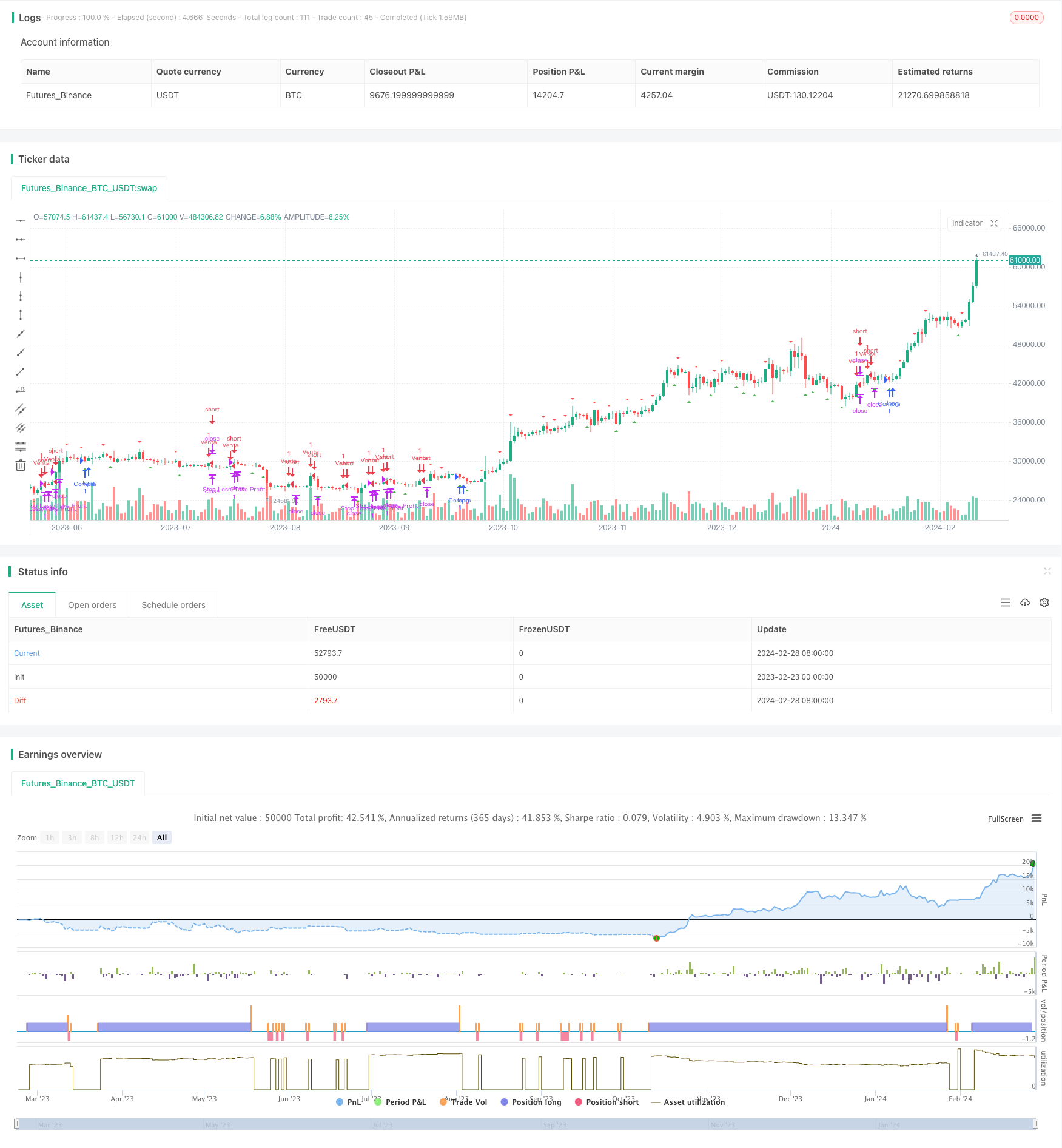
概述
双重确认突破策略是一种结合突破策略和均线策略的交易策略。该策略利用前一日的最高价和最低价作为关键价格位,再配合快慢均线的金叉死叉信号,进行买入和卖出操作。
策略原理
双重确认突破策略的核心逻辑是:
检测价格是否突破前一日的最高价或最低价。如果价格突破前一日的最高价,视为看涨信号;如果价格突破前一日的最低价,视为看跌信号。
在突破发生时,再检测快线(10日线)是否向上突破慢线(30日线)。如果是,进行买入操作;如果快线向下突破慢线,则卖出。
设置固定的止损止盈比例,计算出止损价格和止盈价格。例如策略设置的止损止盈比为1:4,则止损幅度的4倍就是止盈幅度。
在开仓后,如果价格触发止损线就止损退出;如果达到止盈目标就止盈退出。
可以看出,双重确认突破策略同时利用了趋势判断指标(均线)和重要价格位(前一日高低点)的突破来确认交易信号,属于较为稳定可靠的突破系统。
优势分析
双重确认突破策略具有以下优势:
突破前一日高点或低点后再进入,可以有效减少假突破的概率,从而提高入场的准确性。
均线的辅助判断叠加其上,避免在震荡行情中频繁开仓。
采用固定止盈止损比例管理资金,可以把风险和收益控制在可承受的范围。
策略规则简单清晰,容易理解和实施,适合量化交易。
风险分析
双重确认突破策略也存在以下风险:
突破后容易形成空头积累,从而引发反转。为防范这一风险,可以在突破后的第2根K线确认,再进场。
在震荡行情中,止损点容易被触发。可以适当放宽止损范围,或者增加交易次数来分散风险。
固定的止盈止损比例不适合所有品种和行情,需要针对不同市场调整参数。
均线参数设置不当也会错过较好机会或者增加不必要交易。应定期回测和优化参数。
优化方向
双重确认突破策略可以从以下几个方向进行优化:
增加确认K线数量,例如突破后再观察1-2根K线的收盘价是否也突破该重要价格位。
对不同品种和行情环境采用不同的参数组合,例如快慢均线周期、止盈止损比例等,进行回测优化。
将其与其他辅助指标结合使用,如成交量的激增来确认入场信号。
增加机器学习模型预测行情趋势的概率,并结合概率信号调整策略参数。
总结
双重确认突破策略综合利用重要价格位的突破信号和均线的判断指标,可以有效提高交易信号的质量。同时,采用固定止盈止损管理资金风险,使之可以稳定运作。这是一个集趋势跟踪和突破为一体的量化策略,适用于追求稳定收益的交易者。
虽然该策略也存在一些风险,但可以通过持续的回测与优化来控制风险并提高策略的收益率。这是一个值得深入研究与应用的量化策略。
/*backtest
start: 2023-02-23 00:00:00
end: 2024-02-29 00:00:00
period: 1d
basePeriod: 1h
exchanges: [{"eid":"Futures_Binance","currency":"BTC_USDT"}]
*/
//@version=5
strategy("Estrategia de Trading con Señales de Máximo/Mínimo Diario", overlay=true)
// Obtenemos el alto y el bajo del día anterior
previousDailyHigh = request.security(syminfo.tickerid, "D", high[1], lookahead=barmerge.lookahead_on)
previousDailyLow = request.security(syminfo.tickerid, "D", low[1], lookahead=barmerge.lookahead_on)
// Detectamos si el precio cruza por encima del máximo o por debajo del mínimo del día anterior
priceCrossesPreviousHigh = ta.crossover(close, previousDailyHigh)
priceCrossesPreviousLow = ta.crossunder(close, previousDailyLow)
// Marcamos las señales en el gráfico con flechas bajistas y alcistas según corresponda
plotshape(priceCrossesPreviousHigh, style=shape.triangledown, location=location.abovebar, color=color.red, size=size.small, title="Price crosses above previous daily high")
plotshape(priceCrossesPreviousLow, style=shape.triangleup, location=location.belowbar, color=color.green, size=size.small, title="Price crosses below previous daily low")
// EMA rápida
fast_ema = ta.ema(close, 10)
// EMA lenta
slow_ema = ta.ema(close, 30)
// Riesgo beneficio fijo de 1-4
risk_reward_ratio = 4
// Calculamos el tamaño del stop loss basado en el riesgo asumido
risk = close - strategy.position_avg_price
stop_loss = close - (risk / risk_reward_ratio)
// Condiciones de compra y venta
buy_condition = priceCrossesPreviousLow and fast_ema > slow_ema
sell_condition = priceCrossesPreviousHigh and fast_ema < slow_ema
// Marcar entradas
strategy.entry("Compra", strategy.long, when=buy_condition)
strategy.entry("Venta", strategy.short, when=sell_condition)
// Definir objetivo de beneficio basado en el tamaño del stop loss y el riesgo beneficio fijo
target_profit = close + (risk * risk_reward_ratio)
// Definir stop loss y objetivo de beneficio
strategy.exit("Stop Loss/Take Profit", "Compra", stop=stop_loss, limit=target_profit)
strategy.exit("Stop Loss/Take Profit", "Venta", stop=stop_loss, limit=target_profit)
// Señales de compra y venta
plotshape(series=buy_condition, title="Compra", location=location.belowbar, color=color.green, style=shape.triangleup)
plotshape(series=sell_condition, title="Venta", location=location.abovebar, color=color.red, style=shape.triangledown)